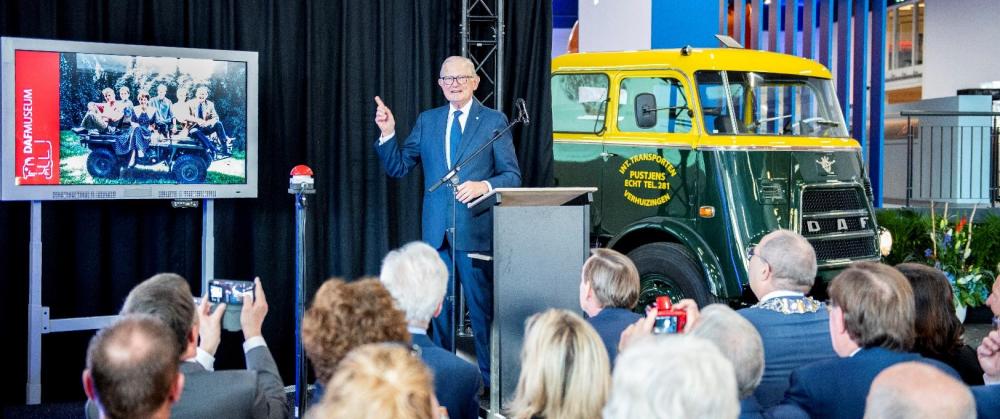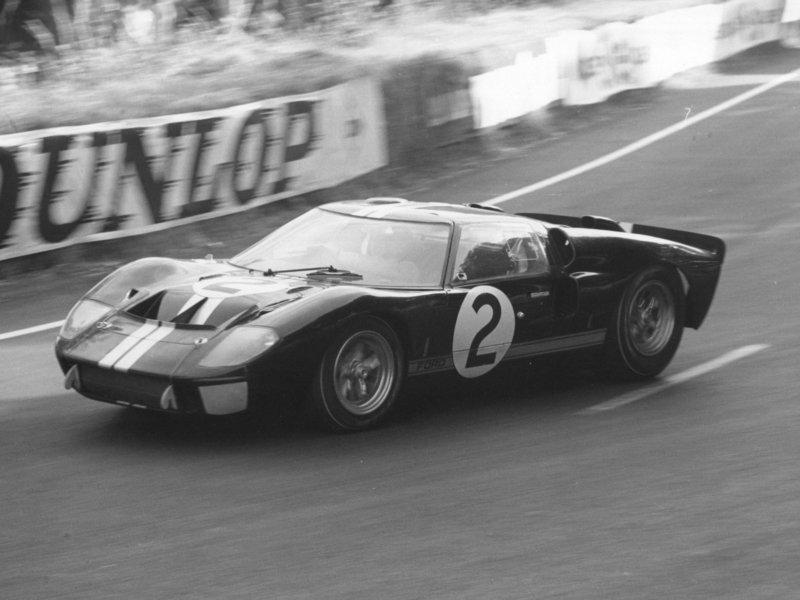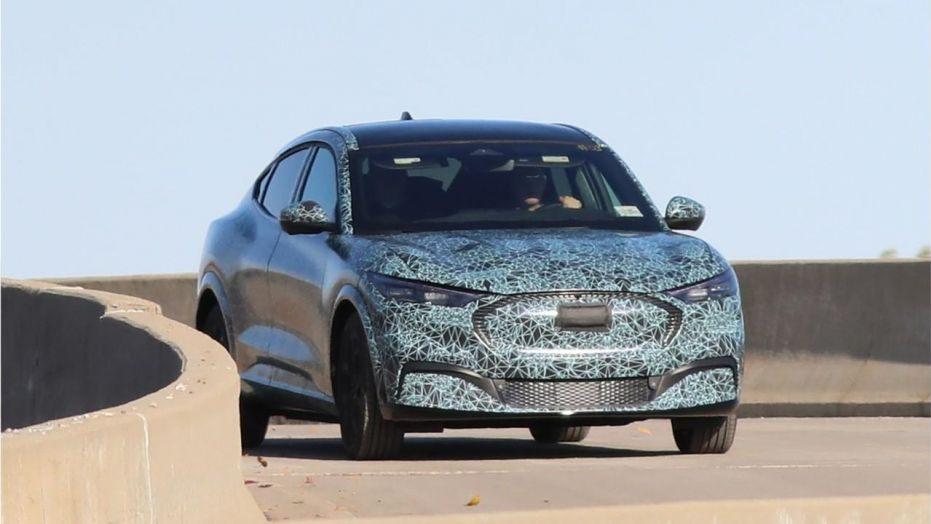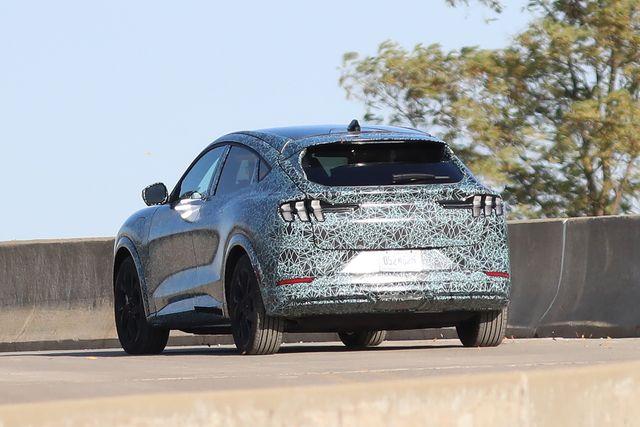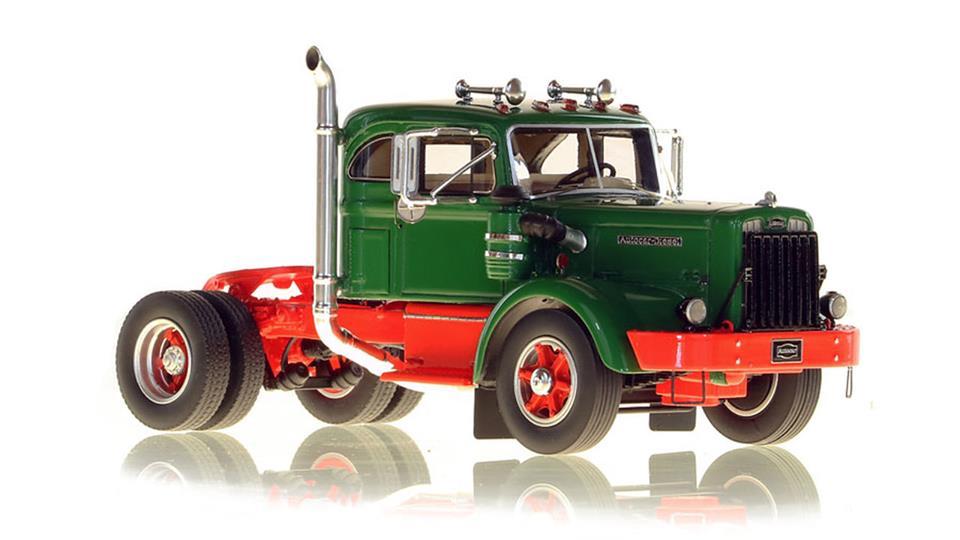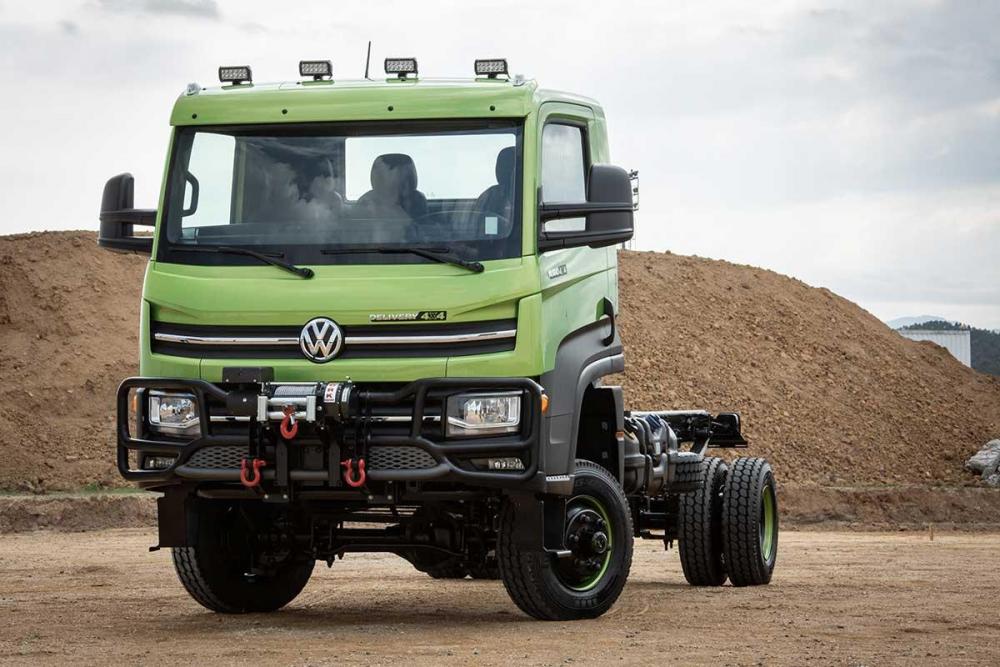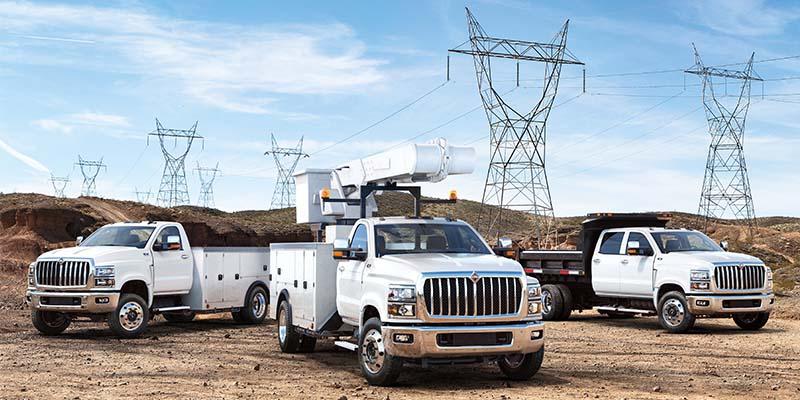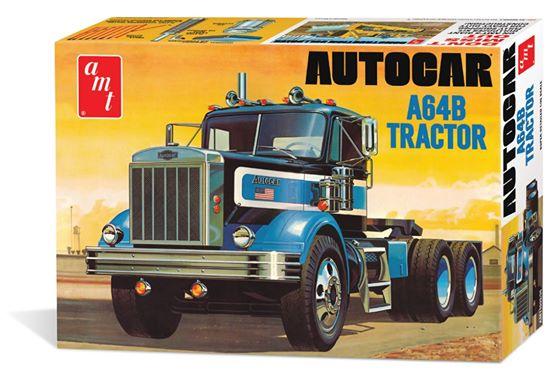
kscarbel2
Moderator-
Posts
18,541 -
Joined
-
Days Won
112
Content Type
Profiles
Forums
Gallery
Events
Blogs
BMT Wiki
Collections
Store
Everything posted by kscarbel2
-
I can't explain it. But I can tell you they've had the technology down pat for many, many years.
-
Model OC13 101 410 Weight just over 1,000kg. https://www.scania.com/group/en/wp-content/uploads/sites/2/2017/12/p171206en-scanias-latest-gas-engine-opens-for-long-distance-transport.pdf .
-
Scania Group Press Release / November 11, 2019 In Beočin, situated just outside Serbia’s second largest city Novi Sad, trucks that run on Compressed Natural Gas (CNG) are a common sight. Zoran Rajak is the owner of Darzal Komerc doo Beočin, a company with a fleet of 65 trucks, whereof 30 are run on CNG. They can all be seen on the winding roads, where they start off near the river Donau and make their way over the border to Croatia with loads of cement and concrete. Long-term committment Rajak started the transition to CNG a couple of years ago. In the future, he wants his whole fleet to be CNG. He has his own filling station and another one is on the way. This will make it possible to fill two trucks in ten minutes. “I’ve chosen to invest in CNG for both environmental and economic reasons,” he says. Growing over the years Starting off with two trucks nearly 20 years ago, Rajak and his wife Dusica, have devoted their lives to run a flourishing business. And the many hours of hard work has surely payed off, as they today are able to develop their company but still run it like all employees are family: “We know all the drivers. If they are happy, they do a good job. We look after them.” The working day starts early, but all drivers come back home every night. Something that makes Rajak a sought after employer. .
-
DAF Trucks Press Release / November 8, 2019 With huge public interest, and in the presence of almost all 160 museum-volunteers, the newly renovated DAF Museum in Eindhoven was officially opened by Professor Mr. Pieter van Vollenhoven. Mr van Vollenhoven is a member of the Dutch royal family, which has always had special ties to DAF. With its record visitor count standing at close to 60,000 per year, the DAF Museum is one of the most popular museums in the Eindhoven region and the most popular museum in the city, according to research by TripAdvisor. Not happy to rest on its laurels, the DAF Museum is set to become an even more exciting attraction — the museum has just undergone eighteen months of major renovation and modernisation work and is aiming to increase its visitor numbers to 80,000 per year. Astounding expansion As you enter the "new" museum, the first thing you notice is the completely new entrance area, the renovated restaurant, the new gift shop and the fresh, modern look that all of these areas have been given. However, the biggest change only becomes obvious once you enter the exhibition space — a completely new wing providing no less than 1,100 m2 of space has been added. "This fantastic expansion has given us even more space to better showroom the highlights of DAF's rich history", says Marc Van Doorne, President of the Friends of the DAF Museum Foundation and the grandson of DAF founder Hub Van Doorne. "It also means that we now have the ability to trace DAF's history right through to the present day, allowing us to highlight the importance of modern transport as well as showcase the latest developments in the industry, for example in engine technology. 'Van Doorne's Aanhangwagen Fabriek', later known as the 'Van Doorne's Automobiel Fabriek', has always been renowned for its innovative solutions. These solutions have resulted in an impressive series of trailers, cars and trucks, which are all on display in the DAF Museum." Official opening The museum was officially opened on Friday 8 November 2019 by Professor Mr. Pieter van Vollenhoven, who arrived at the DAF Museum in a unique DAF Pony. Only 15 of these trucks were ever produced — one of which was owned by the Dutch royal family. Heartfelt gratitude for the volunteers "I am sure that my grandfather Hub and his brother Wim Van Doorne would be incredibly proud if they could see what we have achieved with the new DAF Museum", says Marc Van Doorne, President of the Friends of the DAF Museum Foundation. "We are particularly grateful to our more than 160 volunteers—who are, for the most part, enthusiastic former DAF employees—without whom we would not have been able to carry out this renovation and who make sure that everything in the museum is spot on and ready to receive our visitors every single day." .
-
The new front fascia does look good, much better than the earlier style. This is what makes a Tatra special............. .
-
A look back at 2014........ .
-
Workers ratify UAW-Ford contract with 56% in favor Michael Martinez, Automotive News / November 15, 2019 DETROIT — Roughly 55,000 UAW members at Ford Motor Co. on Friday ratified a new four-year labor contract that allows the automaker to close a Michigan engine plant but provides for raises, thousands of new jobs and more than $6 billion in U.S. manufacturing investment. With a Ford deal in hand, union officials can now move on to Fiat Chrysler, the last of the Detroit 3 to finalize a contract this year. The UAW said the deal passed with a 56.3 percent margin. “Every Ford employee and temporary employee will be at the top-rate for full-time status at the end of this four-year agreement,” Acting UAW President Rory Gamble, who is Director of the UAW Ford Department, said in a statement. “This is a life changing contract for many and provides a template for all future Ford UAW members to a full-time, top-rate status. There will be no more permanent temporary situations and no more permanent tiers.” Joe Hinrichs, Ford’s president, Automotive, said in a statement: “We are pleased that we were able to reach an agreement quickly with the UAW without a costly disruption to production. This deal helps Ford enhance our competitiveness and protect good-paying manufacturing jobs. "Working with the UAW, we have added flexibility to our operations while keeping labor costs in line with projected U.S. manufacturing labor inflation costs and still rewarded our workers for their important contributions to the company." Ford said it will take a $700 million charge in the fourth quarter related to the new agreement, mostly due to the ratification bonus. Chicago Assembly and Lima Engine, in Ohio, were the only two plants to vote against it heading into the final day of voting. The deal was passing by a comfortable 62 percent margin earlier Friday according to Automotive News estimates. But workers at Ford’s largest local, representing more than 12,000 workers at Kentucky Truck and Louisville Assembly, late Friday rejected the pact. Roughly 67 percent workers voted against it, while 51 percent of skilled trades workers there voted for it. An exact breakdown was not immediately available. Ford’s deal largely resembled GM’s in terms of broad economics, including two 3 percent raises for workers and two 4 percent lump-sum bonuses. The first of those bonuses, worth about $2,700 for an average production worker, will be paid within weeks. Full-time Ford workers also will receive a $9,000 ratification bonus, while temporary employees will get $3,500. The deal includes a pathway for temporary workers to become full time and also shortens the time it takes for newly hired full-time workers to earn top wages. Ford said it would create or retain 8,500 jobs over the life of the contract but did not provide a breakdown. Of the $6 billion investment, a majority goes to Ford’s assembly plants. That includes $700 million at Dearborn Truck in Michigan for the next-generation F-150 — including a hybrid version, a battery-electric version and a new Raptor — as well as $1.1 billion at Michigan Assembly in Wayne, Mich., and $900 million at Ohio Assembly, which will get a new undisclosed product in 2023. Bloomberg reported that the Avon Lake, Ohio, plant would get electric vehicle production previously slated for Flat Rock Assembly in Michigan. The deal allows Ford to close its Romeo Engine Plant east of Detroit, but workers there will have the opportunity to move to the nearby Van Dyke Transmission Plant.
-
Ford documents GT Le Mans victory over Ferrari ahead of new movie Sarah Kominek, Automotive News / November 15, 2019 DETROIT -- Ford Motor Co., to mark the premiere of the film Ford v Ferrari on Friday, Nov. 15, is unearthing archives on the Ford GT program and the victory at the 1966 Le Mans race. Ted Ryan, Ford's archives and heritage brand manager, said the movie is giving the company an opportunity to celebrate the team of engineers behind the project. "Ferrari had 30 years of racing experience," Ryan said. "Ford beat them on the third try having zero experience." Longtime Ford Chairman Henry Ford II's rivalry with Ferrari began in 1963 when a contract giving majority control of the famed Italian automaker to Ford was left unsigned by Ferrari officials in May, canceling the deal. (Enzo Ferrari sold half of the company to Fiat in 1968.) Ford began the GT program one month later in June 1963, giving the automaker just a year to design and manufacture a car that could compete for 24 hours in the 1964 race. The first car to race, the GT40 Mark I, was designed and built "on a crushed timetable" by Ford Advanced Vehicles in England, Ryan said. "There was so much wrong with it. "It was kind of underpowered, and Ford did not at the time have a lot of the technology or know-how to make some of the parts, so we purchased aftermarket parts," he said. "We just weren't ready." The 1965 race was a different story, Ryan said. Shelby American and Holman-Moody teamed up with Ford to fit a new 427-cubic-inch engine in the GT body, he said. "That engine helped Ford just dominate NASCAR during the same time period," Ryan said. "Endurance racing is all about aerodynamics, endurance, speed and power. It has to be a balance of all of them." But, Ryan said, the team was too late, testing the engine with the body in March 1965. "They worked frantically between March and June to try to get the car ready," he said. "It was fast but not aerodynamically efficient." The media buildup to the '65 race placed tremendous pressure on Ford and its engineers, Ryan said. "It escalated the attention, and Ford not only failed but did so spectacularly," he said. The second failure prompted the automaker to form a committee, which met monthly in Dearborn, Mich., dedicated to success in the 1966 Le Mans. Instead of engineering a new vehicle, Ryan said, they worked with the guts of the 1965 car to create the 1966 Mark II. "They did the smart thing and perfected the car," he said. "The results were the famed 1-2-3 finish." Ryan said the pressure on the Ford team in 1966 was exponential, with Henry Ford II to drop the green flag at the start of Le Mans that year. Ford sent a handwritten note to all the engineers working on the project with a simple message: "You better win!" Mose Nolan, a Ford engineer in the pits at the Le Mans race in 1966, told Fox 2 Detroit last week that he received one of those cards. "At the win, I got this shot of adrenaline," Nolan said. "Thankfully for Mose Nolan and the rest of the engineers, the hard work they had all done paid off," Ryan said. "Winning an endurance race like that is a combination of engineering, artistry and imagination." "Ford couldn't have won without Shelby or Holman and Moody, and they couldn't have won without Ford," he said. Ford won in 1967, 1968 and 1969 but dropped out of Le Mans because of a change in engineering priorities, Ryan said, until 2016, when it won the Le Mans Grand Touring Endurance professional-class race with the No. 68 Ford GT. Ryan said he's excited that the film will bring widespread attention to the people who worked toward Ford's victory. The win also came at a time when Ford's engineering and product development teams had other key priorities. "Our engineers rose to the occasion," he said. "At the same time, Ford delivered the Mustang, the Bronco and built Mission Control in Houston, Texas, because it was the lead contractor on the space program." .
-
Ford recalls more than 135,000 F-150 pickups Michael Martinez, Automotive News / November 14, 2019 DETROIT — Ford Motor Co. said it's recalling America's best-selling vehicle for an improperly secured part that could lead to the engine stalling or a loss of braking or steering assist. The automaker on Thursday said it is calling back more than 135,000 F-150 pickups in the U.S. from 2019-2020 for a positive battery-terminal fastener. In addition to the mechanical issues, the company said the defect could increase the risk of a potential fire. Ford is not aware of any accidents or injuries related to the issue. Affected vehicles were built at the automaker's Dearborn Truck Plant between July 15 to Oct. 1 this year, and at its Kansas City Assembly Plant from June 24 to Oct. 1. Another 30,073 trucks are being recalled in Canada along with 2,257 in Mexico. Separately, Ford is calling back more than 86,000 F-series Super Duty pickups in the U.S. from 2018-2019 with LED headlamps that are controlled with an incorrectly configured body control module. Ford is not aware of any accidents or injuries related to the issue. Another 14,079 vehicles are impacted in Canada. The pickups were built at the Kentucky Truck Plant in Louisville between May 1, 2017, and Oct. 8, 2019. MKX recall Ford also issued a recall for more than 54,000 Lincoln MKX crossovers from 2016-2017 with 3.7-liter engines that have faulty battery cable harnesses. If the cable harness comes in contact with the transmission shifter cable bracket, it could short and increase the risk of a fire. Another 5,253 vehicles are being recalled in Canada. Ford said it is aware of three vehicle fires potentially related to the issue, but no accidents or injuries. The vehicles were built at Ford's Oakville Assembly Plant in Canada between Nov. 12, 2014, and Sept. 11, 2017.
-
Ford's electric crossover to join Mustang family with Mach-E name Michael Martinez, Automotive News / November 14, 2019 DETROIT — Ford Motor Co.'s new long-range electric crossover is not just inspired by the Mustang; it's joining the stable. The automaker on Thursday said the vehicle will be called the Mustang Mach-E, making it the first crossover to wear the galloping horse badge in the iconic pony car's 55-year history. Ford plans to reveal the Mach E on Sunday night, ahead of the Los Angeles Auto Show. Ford said it will begin accepting $500 refundable reservations starting after the reveal ends, around 9:30 p.m. Eastern. The deposit will allow customers to configure their vehicle and reserve their spot in line for when the crossover goes on sale next year. Ford plans to have actor Idris Elba introduce the Mach-E after last week announcing him as a spokesman. Ford has made a deliberate decision to focus on performance with its next wave of EVs after its early foray into electrification produced now-discontinued vehicles such as the Focus Electric and C-Max plug-in hybrid that were known more for their fuel economy than driving capability. Speaking about the Mach-E at this year's Crain's Detroit Business Newsmaker of the Year luncheon, Ford Executive Chairman Bill Ford said it "is going to go like hell," a callback to the automaker's motto when racing at Le Mans. "When we first started talking about electrification," Ford said, "there was this thought that there had to be a trade-off: It was either going to be green and boring and no fun, or really exciting but burn a lot of fossil fuels. Electrification has come to the point that you can do both." .
-
"That's" a tipper. Can't help but like a Tatra. .
-
-
Just in time for the holidays: Fire Replicas launches Autocar DC-100T museum quality models. "There are certain trucks in our nation's history that just have to be preserved as a replica. Autocars are at the top of the list." Click here: https://www.firereplicas.com/search.php?search_query=autocar§ion=product .
-
GM Defense wants to win the Army's Infantry Squad Vehicle contract
kscarbel2 replied to kscarbel2's topic in Odds and Ends
-
Volkswagen launches all-new Delivery light truck range
kscarbel2 replied to kscarbel2's topic in Trucking News
-
Navistar to resume production in Springfield on Monday
kscarbel2 replied to kscarbel2's topic in Trucking News
UAW Strike Costs Navistar Millions in Revenue Due to Production Delays Heavy Duty Trucking (HDT) / November 13, 2019 Navistar International announced that the six-week strike of the United Auto Workers union at General Motors has impacted the company’s ability to deliver about 5,000 vehicles to customers causing the company to lower fourth quarter revenue guidance. The company estimates that lost production due to the strike is expected to impact the company’s revenue and adjusted EBITDA by approximately $140 million and $15 million, respectively. "We are pleased that we have resumed production at our Springfield, Ohio truck assembly plant last week," said Walter G. Borst, executive vice president and chief financial officer, Navistar. "However, the shutdown of our Springfield plant affected our workforce and the delivery of certain units to customers. As a result, our 2019 full year revenue and adjusted EBITDA is now expected to be at the low end of our guidance range." The strike at GM affected the delivery of certain components to Navistar’s Springfield, Ohio truck assembly plant due to production shutdowns at GM facilities and affiliated suppliers. Navistar was forced to halt production at the Springfield plant on September 23, suspending production of GM-branded vehicles as well as Navistar’s own commercial trucks. On November 4, Navistar resumed production at its Springfield plant. The company’s decision to halt production at the Springfield plant impacted approximately 1,500 plant workers and the delivery of approximately 5,000 vehicles to customers. Affected vehicles included the cutaway model of GM's G Vans, Class 4/5 trucks, and other commercial vehicles. In late 2018, Navistar and GM signed a long-term agreement to develop and assemble medium-duty, conventional cab Class 4/5 commercial vehicles. The two companies also have an agreement under which Navistar manufactures the cutaway model of GM's G Van. . -
The other US market truckmakers could all learn something about sales marketing from.......Autocar.
-
Autocar Trucks is excited to bring back the awesome Autocar A64B Tractor model by AMT. This is the original kit from the 1970s, with over 250 detailed parts scaled from the original Autocar blueprints. Now molded in white with an expanded decal sheet, vinyl truck tires, Cummins NHC-250 6-cylinder diesel engine, optional fog and driving lights, and much more. http://www.autocar-gear.com/Details.aspx?itemNo=S-AC-031 .
-
Once upon a time, we actually enjoyed privacy
kscarbel2 replied to kscarbel2's topic in Odds and Ends
Project Nightingale: Google accesses data of millions of US patients…..without permission BBC / November 12, 2019 Google has gained access to a huge trove of US patient data - without the need to notify those patients - thanks to a deal with a major health firm. The scheme, dubbed Project Nightingale, was agreed with Ascension, which hopes to develop artificial intelligence tools for doctors. Google can access health records, names and addresses without telling patients, according to the Wall Street Journal, which first reported the news. Google said it was "standard practice". [?????] Among the data the tech giant reportedly has access to under the deal are lab results, diagnoses, records of hospitalisation and dates of birth. Neither doctors nor patients need to be told that Google can see this information. The Wall Street Journal reports that data access began last year and was broadened over the summer. Ascension, which runs 2,600 hospitals, said the deal would help it to "optimise" patient care and would include the development of artificial intelligence (AI) tools to support doctors. The company also said it would begin using Google's cloud data storage service and business applications known as G Suite. Privacy concerns However, Project Nightingale has already attracted criticism from those who argue that it takes away patients' control of their own data. "There's a massive issue that these public-private partnerships are all done under private contracts, so it's quite difficult to get some transparency," said Prof Jane Kaye at the University of Oxford. "Google is saying they don't link it to their other data but what they're doing all the time is refining their algorithms, refining what they do and giving them[selves] market advantage." In the UK, Google's AI-focused subsidiary DeepMind was found to have broken the law when it failed to explain properly to patients how their data would be used in the development of a kidney disease app.
BigMackTrucks.com
BigMackTrucks.com is a support forum for antique, classic and modern Mack Trucks! The forum is owned and maintained by Watt's Truck Center, Inc. an independent, full service Mack dealer. The forums are not affiliated with Mack Trucks, Inc.
Our Vendors and Advertisers
Thank you for your support!



